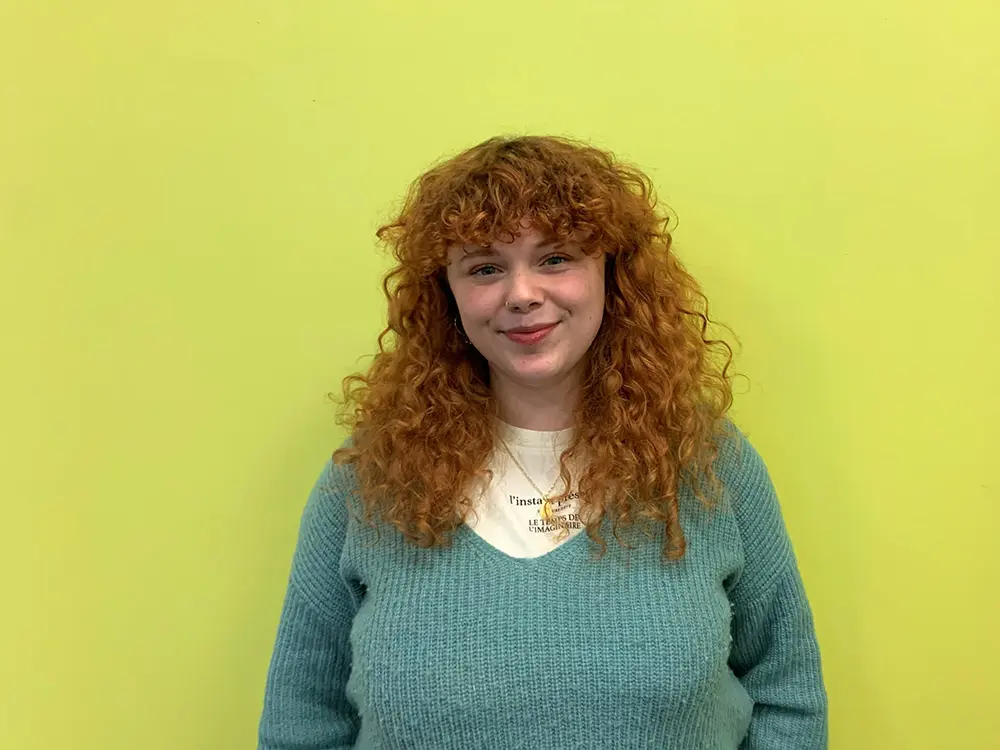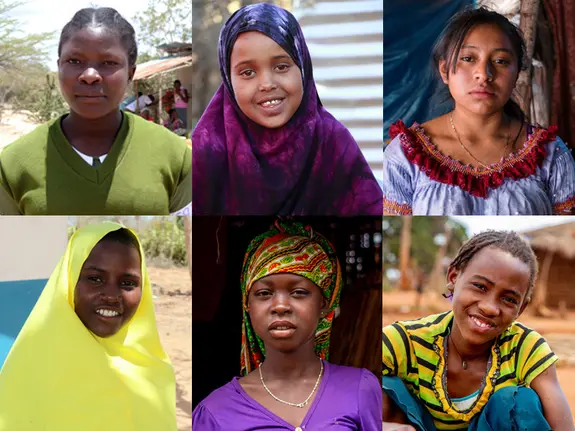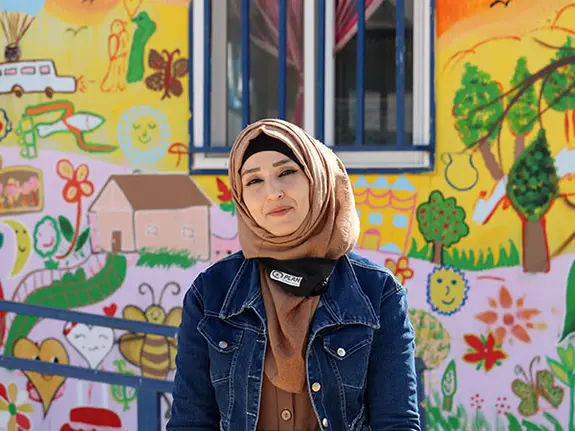Humanitarian response
No child alone in crisis – especially girls. That’s what our humanitarian response is all about.
No child alone in crisis – especially girls. That’s what our humanitarian response is all about.
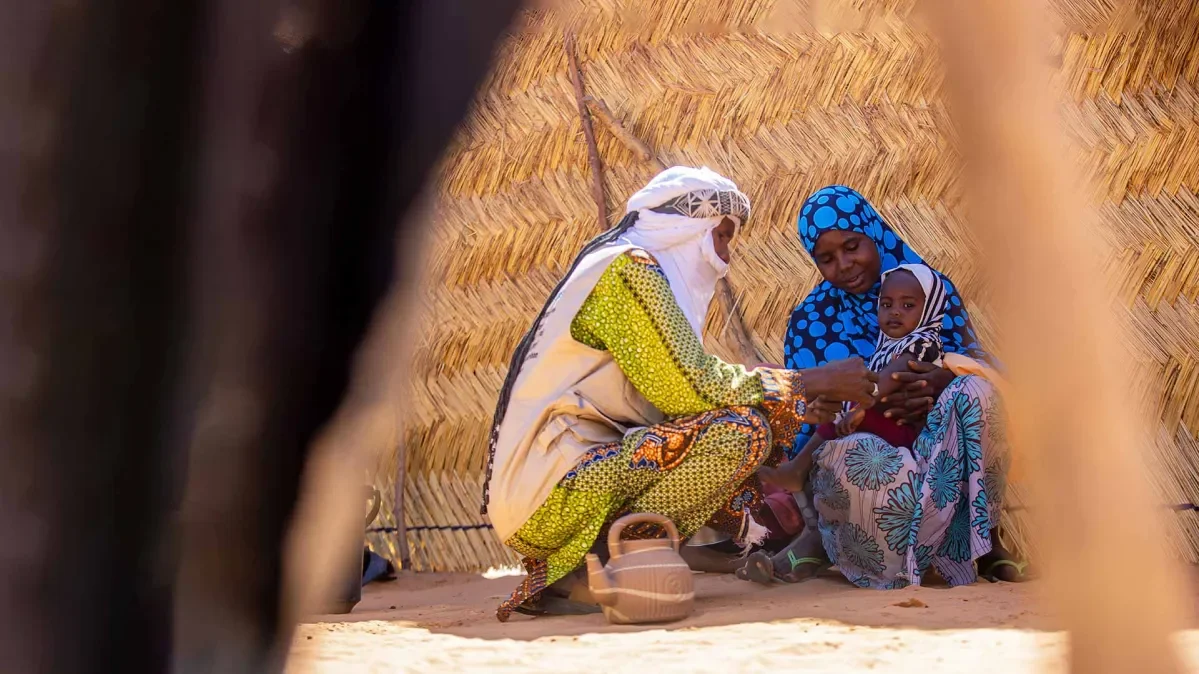
Today there are more children in need of humanitarian assistance than at any other time since the Second World War. Rising hunger, violent conflict and climate change are overlapping to create complex and deadly crises all over the world.
Children are being forced to leave their homes. They're facing days without nutritious food, or any food at all. Their education is unjustly disrupted without safe spaces to learn or teachers to teach.
Girls are especially affected. They’re hiding away while on their period because they have nothing to use. They’re being pulled from school and forced to marry instead while still children themselves.
children have been displaced from their homes.
children live in areas under conflict.
is the increased likelihood of girls in conflict settings missing out on school.

Rising humanitarian needs
In humanitarian crises, vulnerable children and young people are at even greater risk of harm, trauma or exploitation. And girls especially are at even greater risk of injustice, violence and discrimination.
The humanitarian needs are clearly growing – but global funding and leadership is not. This only entrenches the needs of children further at a time when garnering the political will to do something about it is tough.
We can’t advance children’s rights and girls’ equality without prioritising children in crisis. That’s why responding to humanitarian needs is central to the work we do. We will continue to prioritise it.
Be there for children in crisis
Our Children’s Emergency Fund helps us ensure no child faces crisis alone.
Responding in a humanitarian crisis
What makes a difference to children and young people in a humanitarian crisis? The right support at the right time. From Ukraine to Haiti, we work closely with communities to reach those most at risk with timely, effective support.
It might be cash assistance to help parents buy exactly what they need for their children. Or a safe space where children can start to process traumatic events they’ve seen.
The key areas prioritised in our humanitarian response are:
- Immediate needs like water, food, shelter as well as hygiene and sanitation
- Dignity kits for young women and girls which include period products.
- Safe spaces where children can play while essential mental health support is carried out.
- Child protection to keep girls safe from trafficking, violence and exploitation.
- Access to education and whatever is needed to keep children learning.
- Long-term recovery supporting communities with what they need to rebuild.
Inside a child-friendly space
Nechi provides psychosocial support in a child-friendly space in Ethiopia. Many of these children have been displaced by ongoing crisis in the north of the country:
“The children get involved in many different activities at the child-friendly space which are culturally and age-appropriate, including indoor and outdoor games.
“The children in the camp stopped going to school years ago, so they take part in lessons to learn basic literacy and numeracy as well as life skills.
“We have noticed significant behavioural changes in these children who are developing new skills and abilities".
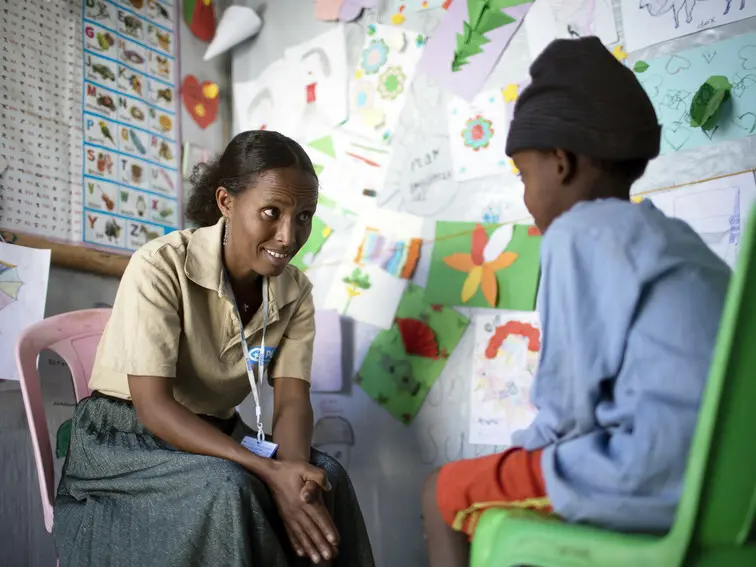
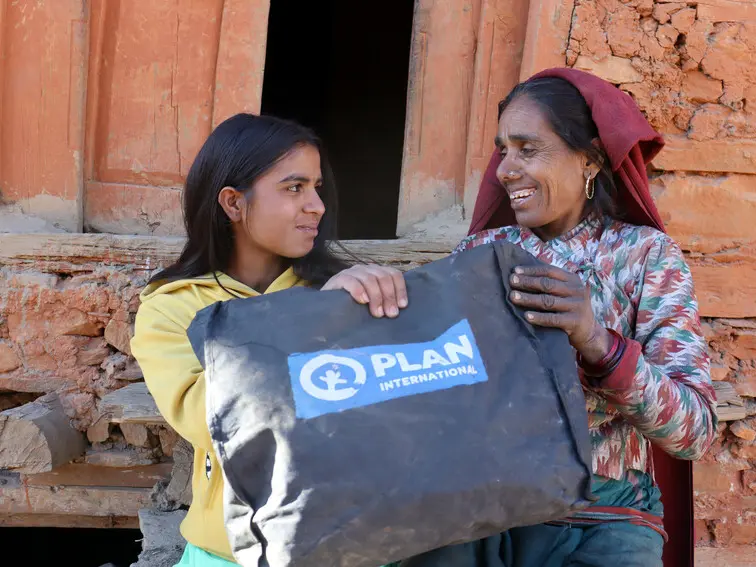
What's in a dignity kit?
"The dignity kits included soap, sanitary pads, underwear, a towel, a solar torch, toothpaste and brush, safety pins, nail clippers and detergent, among other things,” explains 17-year-old Sarita in Nepal.
Sarita received a dignity kit after heavy flooding and landslides destroyed her family’s farm and income.
What’s in a dignity kit depends on the area and specific situation. It’s also based on what communities say they need most.
A few essential items like those in Sarita’s kit can transform how someone manages their period in the most challenging circumstances.
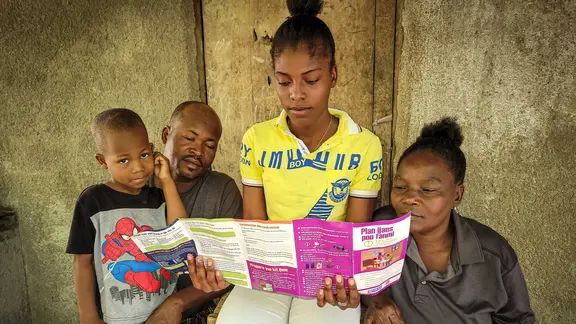
Prevention saves lives
While not every crisis can be predicted or avoided, the impacts of some can be mitigated and lives saved. We help communities prepare for emergencies and know what they can do to stay safe – like Diana’s family.
“Since I was born, I can’t count how many times our house has been flooded,” says 17-year-old Diana who lives in Haiti with her family.
“We’ve lost everything we had at home: books, clothes, uniforms, shoes. However, I will never forget the year following Hurricane Laura in 2020. I lost a few days of school because my family had lost all their belongings. This community is known as one of the most vulnerable areas to flooding.”
Haiti is very vulnerable to disasters and severe climate events such as hurricanes, flooding and earthquakes. Diana and her family were one of 600 families who received training in developing emergency plans to keep them safer in future disasters.
"Now we are aware of why we are most affected during disasters. The family emergency plan helped us understand how vulnerable we were," says Diana.
What's happening right now?
Discover the most pressing humanitarian emergencies children face and what we're doing to help.
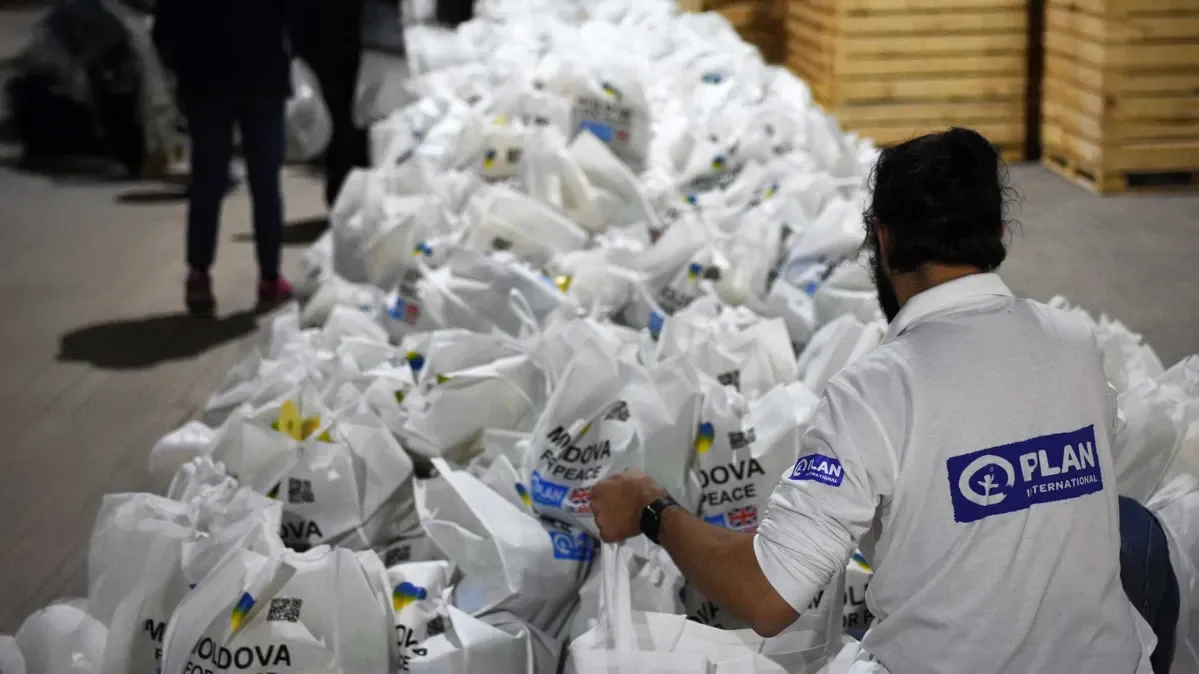
Working together in emergencies
It is a challenge to reach children affected by crisis with the support they need, on the scale that is needed. But to truly advance children’s rights and equality for girls, we must.
Working together as one global community is essential. Only together can we ensure as many children and young people as possible get what they need to live safer, healthier lives.
We’re part of the START Network – a group of 42 national and international aid agencies/NGOs that seek to give more control to those directly impacted by crisis.
We’re also members of the Disasters Emergency Committee (DEC). The DEC is an umbrella organisation that brings together 15 UK aid agencies. Together we maximise funds and impact tackling the major humanitarian emergencies of the day.
Young people taking the lead
As well as responding to emergencies, we advocate all year round for the needs and rights of girls and adolescents to be placed at the centre of humanitarian response.
In fact, young people are leading this conversation, especially in the area of education.
“Education can't be put on the back burner for children in emergency settings,” says Melanie, 24, from the UK.
Melanie is a member of the Youth for Education in Emergencies (Youth4EiE) panel working hard to increase the funding and attention education in emergencies receive.
